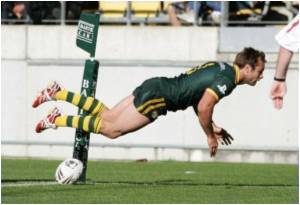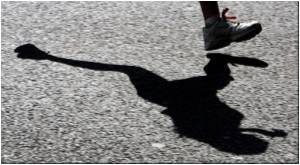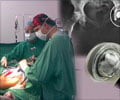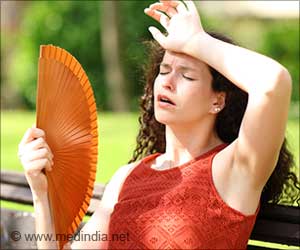Microtears in the hamstring have been effectively treated by a two-part program, claim researchers in London.

Results of the study were presented today at the annual meeting of the Radiological Society of North America (RSNA).
"By injecting the patient's own blood where it is needed at the site of a damaged tendon, we help the patient heal themselves," said lead researcher Waseem A. Bashir, M.D., a radiologist at Royal National Orthopaedic Hospital and Ealing Hospital in London. "Blood contains many growth factors, and the injections have been shown to promote faster healing of certain injuries."
Hamstring tendinopathy is a common sports injury that occurs in soccer, gymnastics, karate or any sport that requires quick acceleration. It may be caused by an improper warm-up or, in an elite athlete, as the result of repetitive strain. Unlike a torn or ruptured tendon that can be surgically repaired, the tiny microtears that characterize chronic tendinopathy are not easily diagnosed, are difficult to heal and often sideline athletes for long periods, if not permanently.
"Patients with hamstring tendinopathy will experience pain walking or climbing stairs and even while sitting or riding in a car," Dr. Bashir said. "The condition is literally a pain in the butt."
In the study, 42 patients with suspected hamstring microtearing underwent ultrasound and MRI to confirm the tendinopathy and then were randomly assigned to one of three treatment groups. The first group received an injection of both a long-lasting anesthetic and steroid on the surface of the tendon, as well as the dry-needling procedure at the site of microtears.
Advertisement
"The injections were all performed with ultrasound and color Doppler, which allows us to watch in real-time where the needle is going," Dr. Bashir said. "During the dry-needling, we can see blood flow increase in the area."
Patients treated solely with an injection of a steroid and dry-needling reported improved functionality for only three to 12 weeks after treatment. A year later, patients in this group reported being at pre-treatment levels of pain and functionality. Patients who received their own blood plus dry-needling reported significant improvements in functionality even one year after the treatment.
Patients who received both their own blood and a steroid along with dry-needling at the site of tendon damage experienced the most significant reduction in pain levels and the most sustained functional improvement one year following treatment.
"Ultrasound-guided ABI in the hamstring, in combination with a local steroid and dry-needling, appears to be a more clinically effective alternative to the current standard, steroid therapy," Dr. Bashir said. "A few of our soccer-playing patients had been told their condition was untreatable and they had basically given up all hope of playing again. They were amazed to be able to play again after our treatment and physical therapy."
He added that ABI therapy has also been an effective treatment for microtears in other tendons, including the elbow, the patellar tendon and those in the rotator cuff within the shoulder.
Source-Eurekalert










